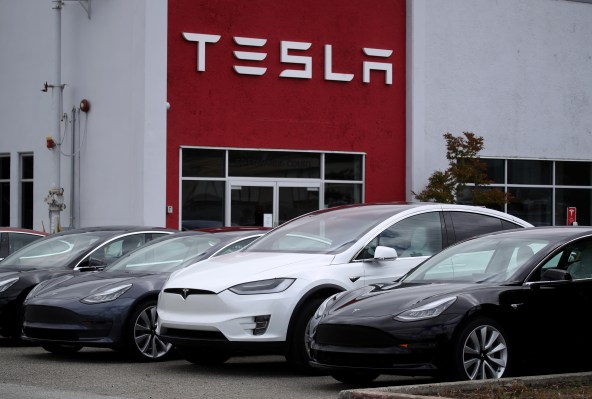
Tesla has picked a site near Austin for its next U.S. factory, a 4- to 5-million square foot $1.1 billion plant that will assemble the automaker’s futuristic Cybertruck, the Tesla Semi and the Model Y and Model 3 for sales to customers on the East Coast.
The decision announced Wednesday during the Tesla second-quarter earnings call marks the end of a fast and furious hunt for the best location — and accompanying incentives deal — for its next U.S. factory. Construction on the factory, which is located east of Austin near the airport, is expected to begin this year.
Tesla CEO Elon Musk described the future factory as an “ecological paradise,” with a boardwalk and bike lanes and where the public will be welcome.
Once completed, the factory in Austin will join a growing portfolio of factories and parts facilities in the U.S., China and Europe. Tesla’s first U.S. factory in Fremont, Calif., is where the Model S, Model X, Model 3 and Model Y are assembled. Tesla’s other U.S. factories include it’s so-called Gigafactory 1 near Reno, Nevada, which produces battery packs and electric motors for the Model 3, as well as a solar panel assembly plant in Buffalo, New York. Tesla opened its factory in China late last year and is building another large assembly plant in Berlin, Germany.
The scouting mission for this latest factory first became public in March when Tesla CEO Elon Musk tweeted that the company was seeking out a location for the central part of the United States. Tesla was eyeing Nashville, but later dropped those plans to focus on a location east of Austin in Travis County as well as land in Tulsa, Oklahoma. While Austin was largely believed to be the frontrunner from the beginning, that didn’t stop speculation or Oklahoma’s efforts to attract the company.
Oklahoma never made its proposed incentives package public. In Texas, details of two incentives deals became known as the proposals wound their way through the public hearings process.
Musk thanked Tulsa and Oklahoma and noted on the call that he and the team were “super impressed” by the state and would consider it for a future site.
Tesla has promised Texas officials it will employ at least 5,000 people. About 25 of those workers are categorized as “qualifying” jobs and would be paid a minimum of $74,050, while the remaining would be middle income jobs with an annual salary of $47,147.
The Del Valle School District was the first to approve incentives for Tesla in a property tax abatement package worth $46.6 million. Commissioners in Travis County followed the district’s lead. The county approved July 14 property tax breaks worth at least $14.7 million — and potentially more — over 10 years.
Under terms of the agreement with Travis County, Tesla must invest $1.1 billion in the new factory within the first five years. In exchange, Travis County will rebate 70% of the property taxes Tesla will pay. Once Tesla’s investment in the factory eclipses that $1.1 billion mark, the property taxes rebates will increase to 75%. Any investments in the factory beyond $2 billion, will give Tesla 80% in property tax rebates.
Travis County has estimated that a $1.1 billion investment by Tesla would generated $8.8 million in new tax revenue over a 10-year period, a figure that takes into account the property tax rebates.
If Tesla fails to hit the investment goal or if its falls 75% short of its jobs requirement in any year, the company won’t receive any property tax relief. The county will also have the ability to recoup tax rebates if Tesla breaches its contract.
Together, Tesla will receive at least $61 million in property tax abatement. It’s possible that Tesla could receive more from the state.



